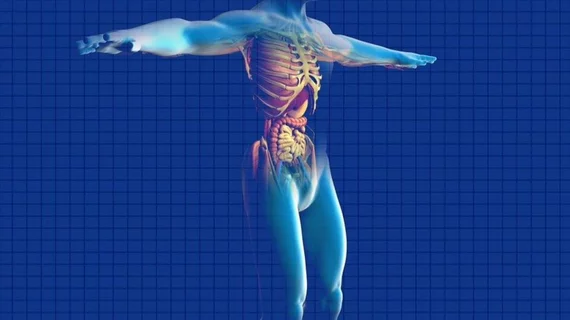GE, Philips, Siemens pass academic test on low-dose DECT
Comparing six dual-energy CT technologies marketed by three scanner manufacturers, radiology researchers have found all models helpful in determining the chemical composition of kidney stones even at substantially reduced radiation doses.
The team reports that DECT helped separate uric-acid stones from other types—even when using dose-optimized scan protocols allowing radiation reduction of 45% to 81%—“without substantial change in diagnostic performance across the different scanners.”
Differentiating urate from non-urate (e.g., calcium, struvite, cystine) composition is important for optimizing treatment planning.
Radiology published the study [1], along with invited academic commentary on it, May 31.
For the study, lead author Ali Pourvaziri, MD, MPH, senior author Avinash Kambadakone, MD, and colleagues at Harvard Medical School prepared 71 in vitro test stones of varying compositions to mimic in vivo clinical scenarios and placed them in a customized cylindrical phantom.
Three of the test scanners were Siemens Healthineers models, two were GE Healthcare units and one, the lone detector-based (vs. source-based) unit, was from Philips Healthcare.
‘Moderate to High’ Accuracy at Differentiating Renal Stone Types
Scanning the stones with reduced dosages per Mass General optimization guidelines as well as with OEM-recommended protocols, the researchers analyzed images for quality. They found every scanner but one, a source-based, twin-beam machine, had an AUC greater than 0.95 in at least one acquisition in distinguishing urate from other stones.
Meanwhile all DECT techniques were able to help differentiate certain calcium-based stones with moderate accuracy, and the phosphate mineral brushite was differentiated from urate with an AUC greater than 0.99.
Further, the authors report no correlation between performance and acquisition with dose-optimized and/or vendor-recommended settings.
However, the authors found that only rapid kilovolt peak switching DECT technology helped differentiate struvite and calcium oxalate monohydrate plus calcium oxalate dihydrate stones, and only dual-source DECT and dual-layer detector-based DECT technologies helped classify cystine stones from other stones.
In their discussion, Pourvaziri et al. underscore that all the DECT technologies they assessed were able to help differentiate stone composition with moderate to high accuracy.
This result, they point out, owed not only to the technologies they used but also to the protocols they implemented and the methods they employed.
“Further studies in large patient cohorts are needed to corroborate our findings in in vivo settings, comparing various DECT technologies, stone size and different body habitus,” they add.
‘Major Clinical Impact’ on Low-dose CT Protocols and Radiation Protection
In the accompanying commentary [2], Austrian radiologists Helmut Ringl, MD, MBA, of the University of Vienna and Paul Apfaltrer, MD, MBA, of the Medical University of Graz write:
This interesting study [showed] that all investigated scanners and protocols of different vendors were able to help differentiate urate stones from non-urate stones, and all machines were able to help differentiate calcium oxalate monohydrate stones. In addition, this study found that the assessed DECT solutions require different amounts of radiation doses and that optimization of the radiation dose of up to 81% reduction relative to the vendor protocols did not affect the accuracy of stone composition discrimination. This finding, that reduced radiation dose does not affect accuracy in urinary stone discrimination, will have a major clinical impact on low-dose CT protocols and radiation protection.”
More Coverage of Dual-energy CT (DECT):
Dual-energy CT: Is it what the doctor ordered for the cost-conscious community hospital?
How radiologists can improve image quality with dual-energy CT
How dual-energy CT can help treat patients with pure ground-glass nodules
These 2 imaging techniques can help specialists use dual-energy CT to assess acute appendicitis
Researchers find 'magic angle' for CT pacemaker imaging
References:
- Ali Pourvaziri, Anushri Parakh, Jinjin Cao, Joseph Locascio, Brian Eisner, Dushyant Sahani, Avinash Kambadakone: “Comparison of Four Dual-Energy CT Scanner Technologies for Determining Renal Stone Composition: A Phantom Approach.” Radiology, May 31, 2022. DOI: https://doi.org/10.1148/radiol.210822
- Helmut Ringl, Paul Apfaltrer, “[Commentary on] ‘Comparison of Four Dual-Energy CT Scanner Technologies for Determining Renal Stone Composition: A Phantom Approach.’” Radiology, May 31, 2022. DOI: https://doi.org/10.1148/radiol.220728

